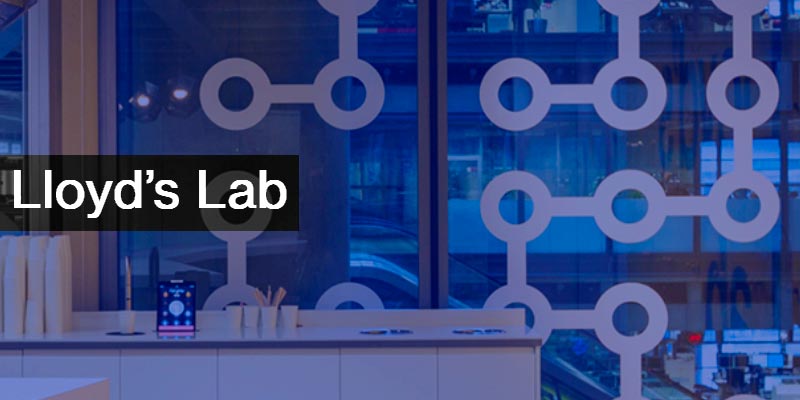Overview
Dawn Miller, Chief Commercial Officer at Lloyd’s and CEO of Lloyd’s Americas, has outlined for BestWire a growing divide between the insurance industry’s public perception and its real-world influence. Beinsure highlighted the key points.
Lloyd’s Lab is driving practical innovation through applied AI, environmental data, and scalable risk tools. It contrasts the early insurtech era—focused on isolated process fixes—with the current phase, which aims to reshape core decision-making structures.
Miller also discusses how startups today are choosing whether to remain tech providers or take on risk roles. At the same time, capital dynamics in the U.S. insurance market raise questions about long-term growth. She argues that telling a stronger story—about insurance as a force for resilience and progress—is now essential.
With over 150 startups through its accelerator, Lloyd’s is investing in the future of underwriting, distribution, and claims management—aligning innovation with the market’s complex risk demands.
Insurance as Purpose, Not Just Product

Dawn Miller has recalled a conversation with a colleague who leads a tech-heavy insurance firm. Out of his 150 engineers, nearly two-thirds didn’t realize they worked in insurance.
They believed they were solving major global issues through data and analytics. This disconnect highlights a communications gap within the industry—and a powerful opportunity.
Insurance intersects with nearly every sector: infrastructure, logistics, health, environmental risk, and beyond.
It supports communities, enables resilience, and powers long-term growth. To connect with younger professionals the industry must do more to showcase its real-world impact.
Innovation offers that entry point. Telling the story of how risk tools adapt alongside global change reframes insurance as a forward-looking, purpose-led career.
“That is so inspirational. It’s about how our industry can frame that so we can really bring out that purpose driven aspect, and I think we do that through innovation, reminding ourselves that we’ve gotten here today and we’ve been able to match the insurance products to all of the changes happening around us, but we all started in an industry where a group of individuals came together and decided that they wanted to send some ships across the ocean. I think that’s incredibly inspirational,” Dawn Miller says.
Beyond the Buzzword: Innovation in Practice

Miller draws a clear line between today’s product-focused innovation and the first insurtech wave a decade ago.
Then, startups often targeted isolated inefficiencies—claims processing, policy distribution, or underwriting tasks. The result was fragmented development, and a burst of tools that didn’t always scale.
Innovation at the time in the industry was thought to be, oh, it’s insurtech. Someone has a great technological issue. They want to come solve one problem. One problem in the claims management process. One problem in the underwriting process. The list goes on.
Now, a second wave has arrived. This group brings more applied data strategies, better AI models, and deeper environmental insights.
They’re not solving isolated issues—they’re attempting to reshape risk decision-making at a structural level.
Miller points out a growing inflection: startups must choose between remaining tech providers or stepping into risk-taking roles.
But if I go back to insurtech, we had that experience 10 years ago, some disappointments, companies were purchased, of course. Now we’re seeing a wave, where we’re seeing insurtech come to the front.
“There’s a huge boom in it at the moment, where we’re seeing different types of individuals come to the front and say, “I’ve got a particular type of data. I can use AI a certain way. I have a new way of looking at our oceans, or our rivers or our environment around us. How can I apply that in the risk environment to help inform those that are taking those risk-based decisions?” Miller said.
“I think it’s a very interesting move, and we’re seeing a trend as well where if you use the kind of McKinsey horizon vernacular, you’re seeing a moment where insurtech, there’s a lot of them coming through the horizon one and waving around horizon two, how do they scale and what to do next? Do they take risk or do they become a service provider? It’s an interesting space”.
Lloyd’s Lab as Innovation Engine

Launched 6 years ago, Lloyd’s Lab aims to accelerate—not incubate—insurtech adoption. The program admits two cohorts per year, giving 10 to 12 startups ten weeks of focused development alongside mentors and market access.
The results stand out: 95% of companies remain in insurance. Most leave with live proofs of concept or capacity agreements in place.
The Lab’s influence extends beyond its participants. It has sparked internal change at Lloyd’s as well, enabling faster onboarding for new products and helping market participants adopt fresh tools more efficiently.
There’s 150 companies that have come through. But 85% are still operating in the Lloyd’s marketplace today.
The lab has maintained a strong retention rate, with over 85% of supported startups continuing within the Lloyd’s network. These startups provide services, take on risk, and form partnerships that enhance the industry’s resilience and adaptability (see Largest InsurTech Startups by Valuation & Venture Capital).
Lloyd’s main programme is an InsurTech accelerator programme

Lloyd’s main programme is an InsurTech accelerator programme which aims to help innovative ideas gain traction and success in re/insurance market.
Located in the heart of the world’s specialist insurance market, the Lloyd’s Lab gives InsurTechs access to a coworking space in the iconic building and the chance to develop their ideas alongside their target audience.
Since our establishment, the Lloyd’s Lab has grown to encompass a diversity of programmes and initiatives, to support insurance innovation at all phases, our support includes our FutureMinds programme, Lloyd’s Lab Challenge and our Launchpad Network.
What’s critically important is almost everyone walks out the door with either a live proof of concept to push their product into the market if they’re providing a service or capacity so that they can then carry on.
Then within the Lloyd’s environment, which I think is so important to have those enablers for innovation to actually find the end user, whether it’s different class codes, we call the innovation class code, transition class code, whether it’s faster processing for delegated authorities, different ways of working, so those innovative products can push out in the marketplace faster.
Shifting Market Demands and Emerging Pressures
In the early insurtech era, most tools served personal lines. Now, the specialty commercial sector is the new focus.
Miller attributes this to growing global stress—climate volatility, supply chain disruption, and geopolitical risk. These conditions have increased demand for adaptable, data-driven risk products.
Now, the topics that are coming up are more related to the specialty property/casualty arena. Why do I bring that up? I bring that up because we are all affected by different changes in climate, the environments around us, changes in supply chain, geopolitical pressure, all these moments that are happening to us and around us at the same time.
It’s making us aware of areas in our own personal risk management and our business risk management that we need to look at differently.
“I think that trend gives us technology that’s available today gives us access to more data so we can learn more, but then we need to turn around and apply that. At the same time, too, not be afraid to innovate. It’ so important,” Dawn Miller noted.
Another aspect of the lab is we have programs that help our underwriters and our brokers and our communities and also our end clients, understand how to innovate, think differently about innovation, and not be afraid of it. It’s important to learn through succeeding quickly and failing quickly if you need to, and then continuing on.
Modern tools provide access to broader datasets, but data alone doesn’t solve for volatility. Success depends on how quickly companies can apply insights and adjust offerings.
This requires a mindset shift: innovation as a continuous process, not a fixed outcome. Lloyd’s supports this with internal training programs designed to help underwriters, brokers, and clients experiment, adapt, and iterate at speed.
Capital Flows and the Future of American Insurance

Over the next decade, Miller sees strong momentum across the U.S. insurance sector. But growth hinges on whether capital continues to flow toward risk-bearing entities. In her view, the key challenge isn’t regulatory or technological—it’s narrative.
Capital flows will play a defining role in shaping the future of the American insurance industry. As interest rates fluctuate and macroeconomic uncertainty persists, insurers must adapt their investment strategies to maintain profitability.
Traditional models that relied on stable fixed-income returns now face pressure, pushing carriers toward diversified portfolios that include private equity, infrastructure, and alternative assets.
This shift introduces new risks but also opens paths to higher yields in a low-growth environment.
Investment capital has options
If insurers want to remain competitive, they must present a clear and confident message: that insurance is a driver of economic progress. Whether supporting E&S or admitted markets, success depends on aligning capital with those best equipped to make risk decisions and deliver coverage to the consumer.
I believe what’s really critically important though is we continue to set the industry up through the way we articulate about it, the way that we lay out and discuss the landscape so that we continue to attract the capital that supports whether it’s our E&S insurance marketplace or admitted marketplace so that the insurances that are required in some of these more at-risk zones that we see around us and just more complex environments around us, that capital is reaching those that are able to take those risk decisions to reach the end consumer.
To do this, the industry must communicate its value more effectively—internally and externally. Dawn Miller emphasizes the need to stand tall, claim the industry’s role in global stability, and create conditions that attract long-term investment.
This is how the American market will sustain growth through complexity, not in spite of it.
Foreign investment is expected to grow
Foreign investment is also expected to grow, especially from markets seeking stable regulatory environments and long-term returns.
However, global capital brings added scrutiny from regulators concerned with solvency, systemic risk, and data security.
This dynamic may prompt updates to solvency frameworks and stress testing protocols, especially as insurers expand their digital and cyber risk coverage lines.
Capital deployment will isupport innovation in insurtech
Capital deployment will increasingly support innovation—particularly in insurtech, climate resilience, and AI-driven underwriting.
This investment will determine which carriers can respond to evolving consumer expectations, climate risk, and rising loss severity.
Ultimately, insurers who can attract and allocate capital efficiently—while navigating regulatory and technological change—will set the pace for industry transformation.
The flow of capital, more than any single product or policy, will dictate how American insurance evolves over the next decade.
FAQ
The first wave targeted single-process inefficiencies. Today’s startups apply data and AI to reshape structural risk decisions.
Lloyd’s Lab is an accelerator helping insurtech startups build, test, and deploy tools for underwriting, claims, and distribution in specialty markets.
Many focus on data or product design without understanding how their work supports risk management and global coverage systems.
Capital flow. Insurers must communicate their value more clearly to attract and allocate capital amid rising global complexity.
Startups gain ten weeks of mentorship, market access, and workspace. Over 85% remain active in the Lloyd’s ecosystem.
Climate modeling, environmental monitoring, AI-based underwriting, and specialty P&C lines are emerging focus areas.
Capital is moving toward firms that can respond to environmental risk, digital shifts, and consumer demand with adaptable solutions.
…………………
Dawn Miller – Lloyd’s chief commercial officer and CEO of Lloyd’s Americas
Edited by Yana Keller — Insurance Editor of Beinsure Media









